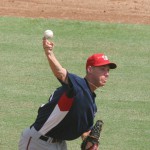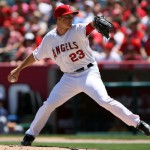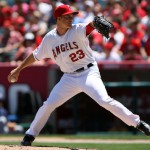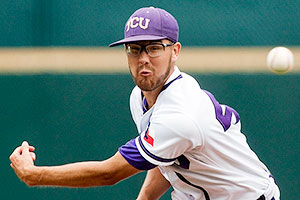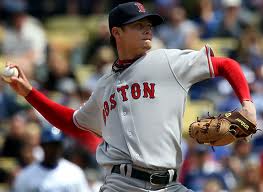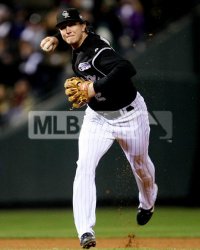
If you had to pick one player to start a team with ... you can't do much better than Tulowitzki. Photo unknown via facebook page.
With the Redskins losing games faster than the GOP loses presidential candidates, Tom Boswell did his weekly Monday chat on 11/21/11. He did take a ton of baseball questions; here’s how I’d have answered them.
As always, questions are edited for clarity and I answer here prior to reading his.
Q: Boz, If you pick any current baseball player (assuming current ages) to start a team with who would it be?
A: Great question. I’d probably go with a position player over a pitcher, just for risk’s sake. Has to be a young, already productive player. I’d focus on a marquee position that generally is difficult to fill. I’d probably go with Troy Tulowitzki. Also in the mix would be Matt Kemp, Ryan Braun, Jacoby Ellsbury, Evan Longoria, Felix Hernandez and Clayton Kershaw. These are all guys who are in their mid-20s and who have already proven they are accomplished, MVP/Cy Young calibre players. Boswell never answered.
Q: How is MLB going to come up with the 2013 schedule, with 15/15 team-league splits, constant interleague play and balanced opponents?
A: Who possibly knows. I just did some quick calculations and there’s not really an easy answer coming: Assuming a (more) balanced schedule:
- 6 home/6 away against 4 divisional rivals = 48 games.
- 3 home/3 away against 10 other league rivals = 60 games
- 3 home/3 away versus your “Natural Rival” = 6 games
That leaves 48 games to play. 48 games is 16 3-game series. That doesn’t really work out too well for 15-team leagues. Do you play every AL team once and double up somewhere? Do you focus on playing a home/away series with each of a 5-team AL division on a rotating basis? That would take away 10 of the 16 series but you still have 18 games to figure out. And, what happens when your rotating division ends up being the same as your Natural rival? Then you either play them as many times as you play your divisional rivals or you double up elsewhere.
Frankly, I think the unbalanced schedule needs to stay, if only to emphasize divisional rivalries. If you increase divisional games to 9 home/9 away then you have 72 games accounted for intra-division. Take away 60 regular season games intra-league and your 6-game set versus your “natural opponent” you’re left with exactly 24 games. That’s 8 three-game series, which still isn’t an even number but could be handled with a team playing an entire AL division (splitting home and away) and parts of another. I don’t know; there’s no real clean solution that makes itself evident.
Boswell also says he has no idea how the schedule will work.
Q: Better Pitcher for the Nats – Oswalt or Buerhle?
A: I’d rather have Oswalt frankly. Buehrle may be an innings eater but Oswalt is a better pitcher, an “Ace” without question just within the last couple of seasons. I don’t want a #3 starter; I want a guy to join my two best arms and give me something approaching a playoff rotation. Caveat; I have to be sure Oswalt is healthy. Does he have too many innings on that arm? Is he recovered from his back injury? The Nats are clearly favoring Buehrle right now, an indication that either they don’t trust Oswalt’s injury or they perceive that Oswalt wants to return to Texas. Boswell doesn’t really answer, just noting that Buehrle throws about as hard as Milone.
Q: So who do you think we have in CF starting next year?
A: Someone that we either sign or acquire from outside the organization. The easy guess would be BJ Upton, but a couple things have to happen before that happens. There’s a few other interesting options that could serve as another 1 year hold-over til we figure things out. I don’t see the team depending on Werth in center full time. Ankiel was excellent defensively but was awful at the plate and the team should go in a different direction. Boswell goes with Upton, after a non-tender.
Q: Boz – Rizzo makes numerous references to the Nats being open to trades. The team is in the unique position of having a surplus of young talent. Who do you think are the untouchables and who are the prospects that we may never see play in a Nats uniform because they were traded away?
A: Untouchables: Harper, Strasburg, Espinosa, Zimmerman, Rendon, Purke, Cole, Goodwin, Meyer, Norris, Peacock. Potentially in play for trades: Storen, Clippard, Solis, Ray, Desmond, Hood, Marrero, Detwiler, Lannan and pretty much anyone else. Prospects we may never see in a Nats uniform? That’s a harder question to guess on. There’s certainly guys who seem blocked in a certain extent, but I’m guessing we trade MLB talent to unblock them before we trade them as prospects. The team has come too far with its farm system to just throw away the fruits of it. Boswell agrees mostly; he’s too busy using these questions as a forum to trash the Redskins.
Q: So do you think there is a chance that they sign Zim to a long term contract now or are we in danger of him going to free agency? I don’t want to see him in a Yankees/Phillies uniform.
A: This is a better question for NEXT off-season. However if I’m Rizzo, and Zimmerman spends another couple months on the DL this season with some random injury, I’m really, really hesitant to give him a Troy Tulowitzki/Ryan Braun type of extension. I may just allow him to leave or trade him mid 2013 (assuming the team isn’t in 1st place at the time). By the way, he’ll never play for the Yankees; they have roughly $170M locked up in Alex Rodriguez‘s aging bat for the next decade. Phillies? I don’t think they have much in the way of payroll flexibility in the 2013 timeframe. A real possibility is Boston; i have a future blog post detailing the scenario they could find themselves in sooner than later. Boswell says they can, and should do the deal, despite the risks b/c he may be a lot more expensive next off-season.
Q: If you were starting an MLB team today, who would you want as your ace? Clayton Kershaw or Stephen Strasburg? Kershaw already has a Cy Young yet is only four months older than Strasburg.
A: I call this the Jason Amos question, my LA Dodger following friend who posed this same question to us earlier this season. Right now, if I had to choose between the two I’d have to go Kershaw. Strasburg could be a question mark for years to come. If Strasburg thorugh finishes a couple of healthy seasons I may change my mind. Strasburg has such a higher level of dominance capability that you’d have to choose that for the longer term, if you were convinced of his health.
A follow up question though; are either Kershaw or Strasburg the best young pitcher in baseball? I say maybe not: Felix Hernandez and Clay Buchholz have both put up pretty good seasons in their pre-arbitration years. Guys like Ian Kennedy, Michael Pineda, David Price also put their names in the mix.
Boswell says Kershaw, saying he’s “done it.” Fair enough.
Q: After Harper’s Arizona Fall League performance, is there any chance he makes the opening day squad if he is the best candidate coming out of spring training?
A: There is a chance, if only because Davey Johnson has made a habit of selecting precocious and talented players and sticking with them. Guys like Doc Gooden and Daryl Strawberry. However, the arithmetic penalty for getting Harper into super-2 status by accident is pretty clear; it could cost the team north of $15M. So, my gut says Harper will be left in Harrisburg to tear up AA for a few weeks, move up to Syracuse and join the team in mid June. If he earns it, of course. Boswell agrees with this assessment, then gives up a nugget; apparently Johnson “called up” most of the 9/1 call ups without really conferring with Rizzo, meaning they had to scramble to do the 40-man moves to make it happen.
Q: I noticed that the Nats added catcher Jhonatan Solano to their 40-man roster. This seems to indicate that they will trade one of their catchers (most likely Derek Norris) in exchange for a centerfielder. My best guess is Norris, LaRoche (assuming the Nats eat most of his contract), and Marrero to the Rays for Upton. What do you think?
A: The Nats added Solano for spare-part cover, nothing more. It indicates nothing about a potential trade, only that they didn’t have another MLB-ready catcher on the 40-man in case Ramos or Flores gets hurt straight away. Norris isn’t ready yet, but is a better prospect than Flores (and possibly than Ramos). I think the trade bait is really Flores.
By the way, that trade offer for Upton is awful. The Rays are most likely non-tendering the guy; why would we give up such a haul for him? GMs know the Rays are hamstrung and will wait them out. Just as the Twins should never have traded Ramos, the Nats will be hard pressed to give up Norris.
Q: Considering the abysmal state of sports in DC (including, right now, the Caps) is it the time for the Nats to take advantage and go big now? Rizzo’s MO is to fly under the radar on free agency and trades so there’s little that’s going to come from the Nats by way of info. Do you think they might be considering going after some of the big names, such as Pujols or Fielder (and trading LaRoche)?
A: Why deviate from the plan now? This team is getting setup for the very long term, generating a ton of rising talent, cost contained, while augmenting where needed with key free agents. LaRoche has zero trade value, so unless you want to waste 1/8th of your payroll you have to use him. I think blowing $200M on either Pujols or Fielder would be shortsighted and would unnecessarily hamstring this franchise going forward. Boswell thinks its a good idea.


